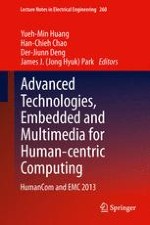2014 | OriginalPaper | Buchkapitel
Development of a Virtual Reality-Based Pinch Task for Rehabilitation in Chronic Hemiparesis
verfasst von : Shuya Chen, Shih-Ching Yeh, Margaret McLaughlin, Albert Rizzo, Carolee Winstein
Erschienen in: Advanced Technologies, Embedded and Multimedia for Human-centric Computing
Verlag: Springer Netherlands
Aktivieren Sie unsere intelligente Suche, um passende Fachinhalte oder Patente zu finden.
Wählen Sie Textabschnitte aus um mit Künstlicher Intelligenz passenden Patente zu finden. powered by
Markieren Sie Textabschnitte, um KI-gestützt weitere passende Inhalte zu finden. powered by
